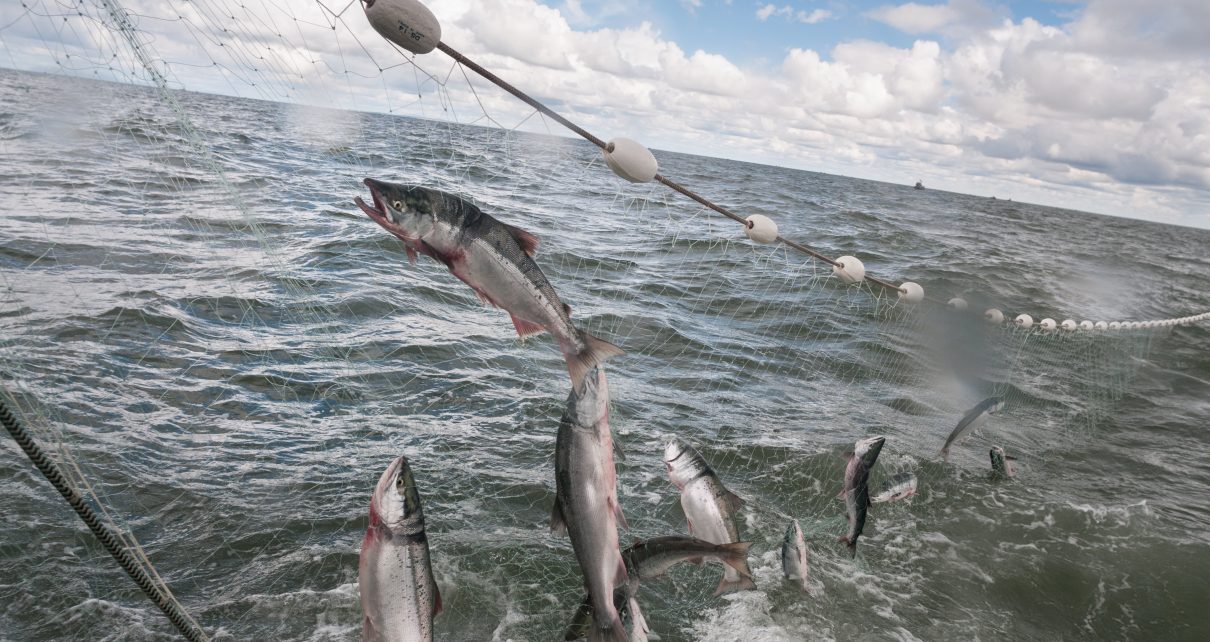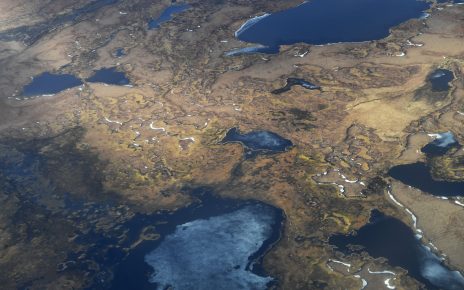Every year, salmon come home to Alaska’s frigid rivers to mate, lay their eggs, and die. The state’s salmon runs are some of the biggest in the world. But over the past few decades, those big salmon runs have featured ever smaller salmon.
“You talk to people up there who’ve been fishing for long time, and they’re definitely able to tell you that, you know, we just don’t see those really large, old salmon that we used to see.”
Krista Oke, a postdoctoral fellow at the University of Alaska, Fairbanks. Oke and colleagues at the University of California, Santa Cruz, and elsewhere analyzed records of fish size going back to the 1950s. They included data on some 12.5 million salmon—each of which had to be measured by someone from the Alaska Department of Fish and Game. And there’s no question about it: salmon have shrunk.
Sockeye salmon today are 2.1% shorter than their ancestors. Chum salmon are 2.4% shorter and Coho are 3.3% shorter. Chinook, or king, salmon showed the greatest declines at 8%. That’s an average difference of more than 2 inches in length. The study is in the journal Nature Communications. [K. B. Oke et al, Recent declines in salmon body size impact ecosystems and fisheries]
The researchers haven’t nailed down the exact reasons behind this trend. But their analysis suggests that climate change and competition with wild and hatchery-raised salmon both play a role. They also discovered that much of the change in body size is due to fish returning from the ocean at a younger age now than in the past.
Oke says fish could be returning earlier because they’re reaching maturity faster for some reason—or because the ocean has become a riskier place for older salmon to survive.
“What could be happening is the salmon that otherwise would have returned large and old just aren’t making it that long.”
Whatever the cause, this size shift has massive ramifications for people and the environment. Oke and her team calculated that catching smaller fish may have already slashed the value of Alaska’s commercial salmon fisheries by 21%. It’s also likely reduced the food available to subsistence fishers—many of whom rely on stores of salmon to get them through the long, harsh winter—by as much as 26%.
On the ecological side, the researchers estimated that smaller fish lay 16% fewer eggs, which could depress salmon populations in the future. And, the salmon bring 28% fewer nutrients into the watersheds where they spawn, according to the study.
“After they breed and die, their carcasses actually fertilize freshwater and terrestrial ecosystems with these marine-derived nutrients that are really important and that get used by all kinds of animals, like bears and songbirds and even taken up into trees.”
With no single factor to blame for shrinking salmon, there’s no obvious fix, Oke says. But there are still plenty of fish in the sea. They’re just smaller than they used to be.
— Julia Rosen
[The above text is a transcript of this podcast.]




